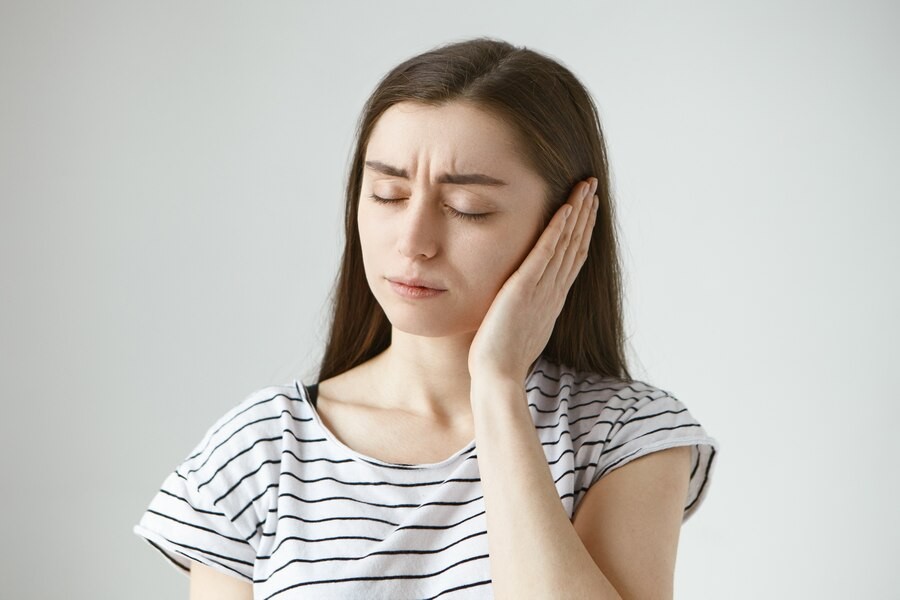Fungal infections can affect various parts of the body, including the ears. These infections typically impact the outer ear, often leading to uncomfortable symptoms such as pain, itching, and discharge. Although they’re generally not serious, they can be highly irritating.
What is Otomycosis?
Otomycosis is a fungal infection of the outer ear canal. Commonly caused by fungi like Aspergillus and Candida, this infection thrives in warm and moist environments, making the ear canal an ideal place for fungi to grow.
Fungal infections can affect anyone, but certain groups are more vulnerable, including swimmers, people with weakened immune systems, and those who live in tropical regions. Typically, the infection affects only one ear, but it can spread and impact both ears.
Symptoms of Fungal Ear Infections
Symptoms of fungal ear infections generally include:
- Pain
- Itching
- Inflammation
- Swelling
- Redness
- Peeling skin
- Ringing in the ears
- Full sensation in the ears
- Discharge that can be white, yellow, black, gray, or green
- Hearing impairment
Causes of Fungal Ear Infections
Several factors can lead to fungal infections in the ear, such as:
Moist Environments
Fungi thrive in warm, moist conditions. Ears frequently exposed to water, such as those of swimmers or people in tropical regions, create a favorable environment for fungal growth, increasing the risk of infection.
Improper Ear Cleaning Methods
Frequent or improper ear cleaning—especially overusing cotton swabs—can damage the protective layer within the ear canal. This layer serves as a natural barrier against infections.
Use cotton bud or ear sanitizers carelessly can cause small wounds to the ears, and damage to it can allow fungi to enter more easily, leading to infection.
Use of Unclean Hearing Devices or Earphones
Using unclean hearing aids, earphones, or earplugs can create a warm and moist environment in the ears, promoting fungal growth. Additionally, accumulated dirt and bacteria on these devices can worsen the infection.
Weakened Immune System
People with weakened immune systems, such as those with HIV/AIDS, diabetes, or individuals undergoing immunosuppressive treatment, have a higher susceptibility to fungal ear infections. When immunity is low, the body is less capable of combating fungi.
Prolonged Use of Ear Drops or Antibiotics
Ear drop or antibiotic packaging usually cautions against prolonged use. Long-term use of these medications can alter the balance of natural flora within the ear, which includes beneficial bacteria that help prevent fungal growth. If this balance is disrupted, fungi may proliferate, causing infection.
Fungal infections in the ear often require antifungal treatment, such as ear drops or ointments. Untreated infections may lead to more severe complications, including middle ear infections or hearing loss.
Seek medical advice promptly if you experience symptoms of a fungal ear infection. You can also consult a doctor through the Ai Care app, available for download on the App Store and Play Store.
Curious about other health conditions? Click here!
- dr Hanifa Rahma
Lana Bandoim (2024). Otomycosis: What You Need to Know. Available from: https://www.healthline.com/health/otomycosis
Cleveland Clinic (2023). Fungal Ear Infection (Otomycosis). Available from: https://my.clevelandclinic.org/health/diseases/25009-fungal-ear-infection
WebMD (2023). What Is Otomycosis?. Available from: https://www.webmd.com/a-to-z-guides/what-is-otomycosis
Mayo Clinic (2022). Aspergillosis. Available from: https://www.mayoclinic.org/diseases-conditions/aspergillosis/symptoms-causes/syc-20369619
Cleveland Clinic (2022). Candidiasis. Available from: https://my.clevelandclinic.org/health/diseases/23198-candidiasis
Christopher Hilton, MD. What to know about Q-tips and safer ways to keep your ears clean. Available from: https://www.healthpartners.com/blog/are-q-tips-dangerous/
Health Direct (2024). Ear infection. Available from: https://www.healthdirect.gov.au/ear-infection












